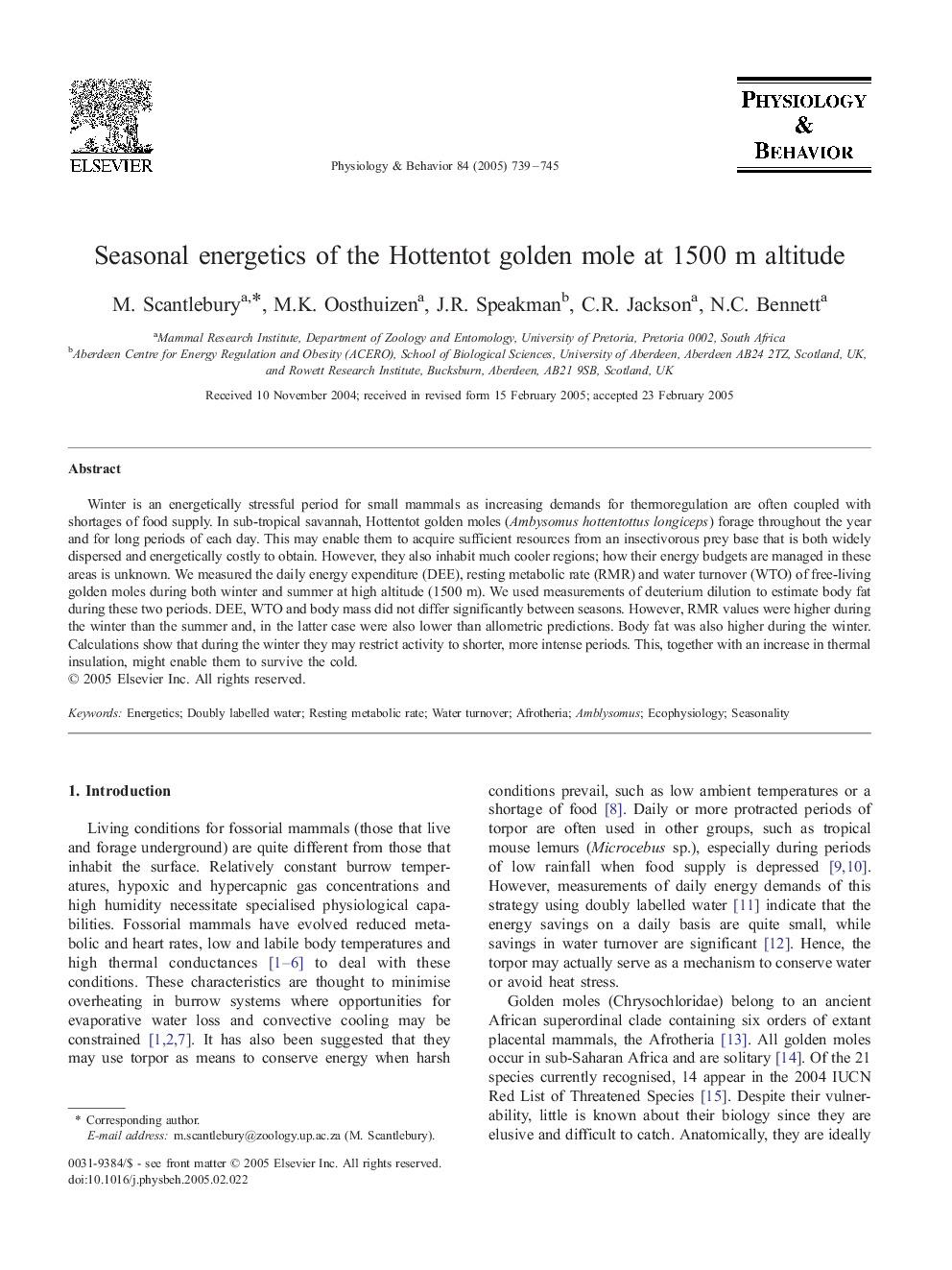| Article ID | Journal | Published Year | Pages | File Type |
|---|---|---|---|---|
| 9149614 | Physiology & Behavior | 2005 | 7 Pages |
Abstract
Winter is an energetically stressful period for small mammals as increasing demands for thermoregulation are often coupled with shortages of food supply. In sub-tropical savannah, Hottentot golden moles (Ambysomus hottentottus longiceps) forage throughout the year and for long periods of each day. This may enable them to acquire sufficient resources from an insectivorous prey base that is both widely dispersed and energetically costly to obtain. However, they also inhabit much cooler regions; how their energy budgets are managed in these areas is unknown. We measured the daily energy expenditure (DEE), resting metabolic rate (RMR) and water turnover (WTO) of free-living golden moles during both winter and summer at high altitude (1500 m). We used measurements of deuterium dilution to estimate body fat during these two periods. DEE, WTO and body mass did not differ significantly between seasons. However, RMR values were higher during the winter than the summer and, in the latter case were also lower than allometric predictions. Body fat was also higher during the winter. Calculations show that during the winter they may restrict activity to shorter, more intense periods. This, together with an increase in thermal insulation, might enable them to survive the cold.
Keywords
Related Topics
Life Sciences
Biochemistry, Genetics and Molecular Biology
Physiology
Authors
M. Scantlebury, M.K. Oosthuizen, J.R. Speakman, C.R. Jackson, N.C. Bennett,
